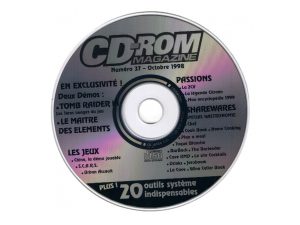With around 6 million CD-ROM drives by the beginning of 1994 (double the amount of the beginning of 1993, see Glenn 2014), and the growth, since the 1970s of personal computers (PCs) in households, it is no surprise that CD-ROM sales reached 6 billion dollars in 1993 (idem, p. 185). Magazines such as CD-ROM Today (in the USA) played an important role in advertising CD-ROMs in their various formats to consumers in the 1990s. As we will see, some technologies used by CD-ROMs in the 1990s have stuck, others have resurfaced in other technological forms nowadays.
This blogpost will look at some advertising trends and how CD-ROMs, multimedia upgrade kits, and especially CD-ROM games, were advertised in two magazines (retrieved from the Internet Archive) in the 1990s: CD-ROM Today (USA) and CD-ROM Magazine (France).
Magazine adverts, magazine subscriptions, and free CD-ROMs
Throughout the 1990s, magazines had advertising for CD-ROMs in many ways. Firstly, one and two-page advertisements (mostly for CD-ROM video games) can be found throughout the CD-ROM Today magazine collection available on the Internet Archive, especially in later issues. Advertisements come in other forms too, for instance indirectly through reviews of games, which dominate the latter pages of these magazines.
These magazines had special offers for subscriptions. Some magazines offered free CD-ROMs packed with shareware and demos for the latest games (see image below) with their subscriptions, while others proposed discounts on upcoming issues. Demos for CD-ROM games were advertisements in themselves, allowing people to try limited versions of games before buying the full versions. Shareware operated on a similar principle (with such shareware collections still being preserved on the Internet Archive).

A CD from CD-ROM Magazine (October 1998) containing several game demos and shareware.
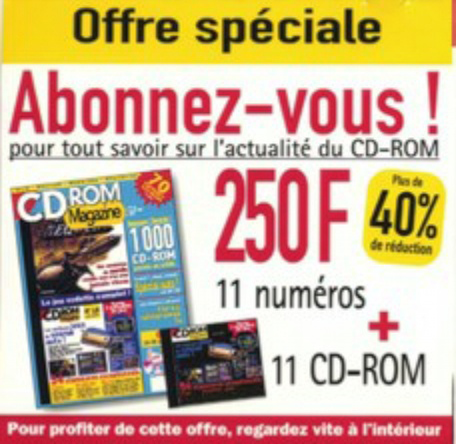
An advertisement in CD-ROM magazine (May 1997) for the subscription and its benefits
Multimedia upgrade kits
In the 1993 editions of the US-based CD-ROM Today, several adverts (such as those below) promoted the idea of multimedia upgrade kits to people. With these multimedia upgrade kits, people would spend several hundred dollars to acquire the latest technology and equipment (cases, CD-ROM players, etc.), and keep up with the quickly evolving computer hardware.

Advertisements for a multimedia upgrade kit (CD-ROM Today, Issue 2 and 3, 1993)

The fact that these upgrade kits were not advertised at all in the 1995 editions of the same magazine brings forward questions: did they not sell or on contrary sell enough? Did technology change too fast to make such investments worthwhile? According to Glenn (2014, 3rd edition, p. 179), multimedia was indeed a craze in the 1990s, and the number of people with CD-ROM disc drives doubled (from 3 million to 6 million) from 1993 to 1994. Perhaps this is the reason why the number of adverts for multimedia kits fell: there was less demand for them by this point.
Video Games on CD-ROMs, the usual?
CD-ROMs, and much of their advertising in the 1990s in these magazines, centred around video games. However, the term video games is a very broad one, as lots of different genres co-exist.
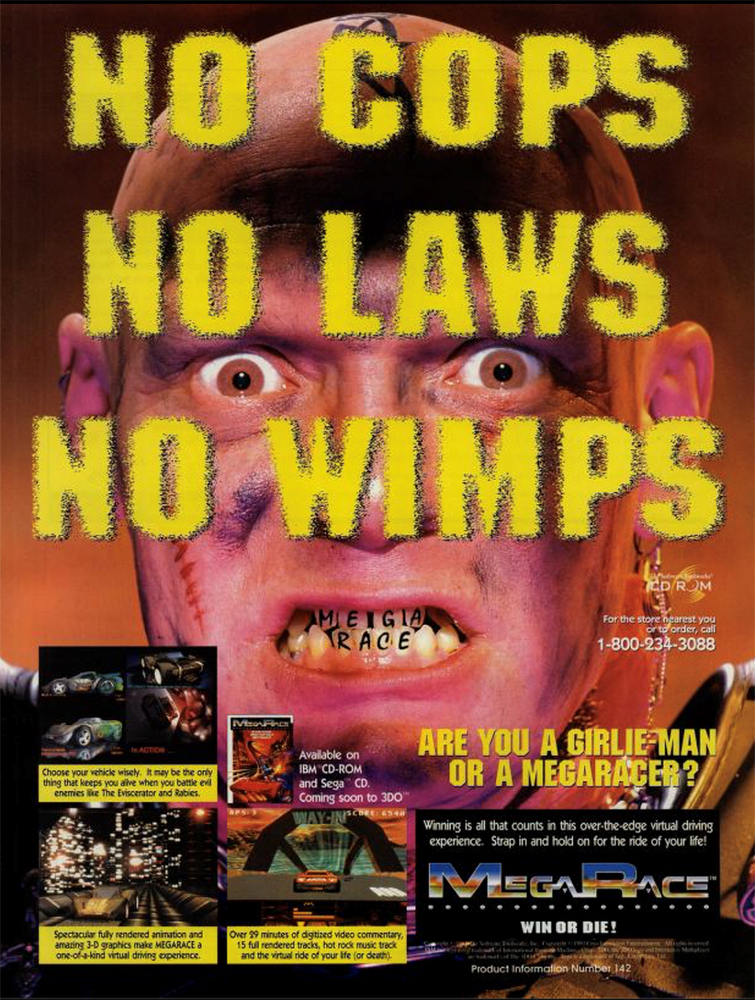
Advertisement for the CD-ROM video game “MegaRace” (CD-ROM Today, Issue 6, 1994)

Advertisement for a collection of educational CD-ROMs (CD-ROM Today, Issue 3)
Unsurprisingly perhaps, many CD-ROM video games catered to the militaristic, action, fighting style video games, such as Seawolf or Pacific, emphasising strategy or historical setting. Science-Fiction was also a prominent genre of CD-ROM games advertised in these magazines in the 1990s. Some, like Ships of Steel, Men of Iron: Jutland and MegaRace: Win or Die (see image below) played on the idea of the tough, strong, alpha male. MegaRace: Win or Die, in particular, stands out. The wide eyes and facial expression of the man, the bold, big writing, the rebellious nature that the advert gives off, and the tagline “Are you a girlie man or a Megaracer?” all stand out and heavily cater to a male audience. Whether such an advert – with its language, and all – would be printed today is a question worth thinking about, as is what such an advert says about perceptions within gaming at the time.
CD-ROMs targeted at children (and therefore, also at parents) were heavily advertised too, such as Putt Putt Joins the Parade and a selection of educational CD-ROMs as those shown above.
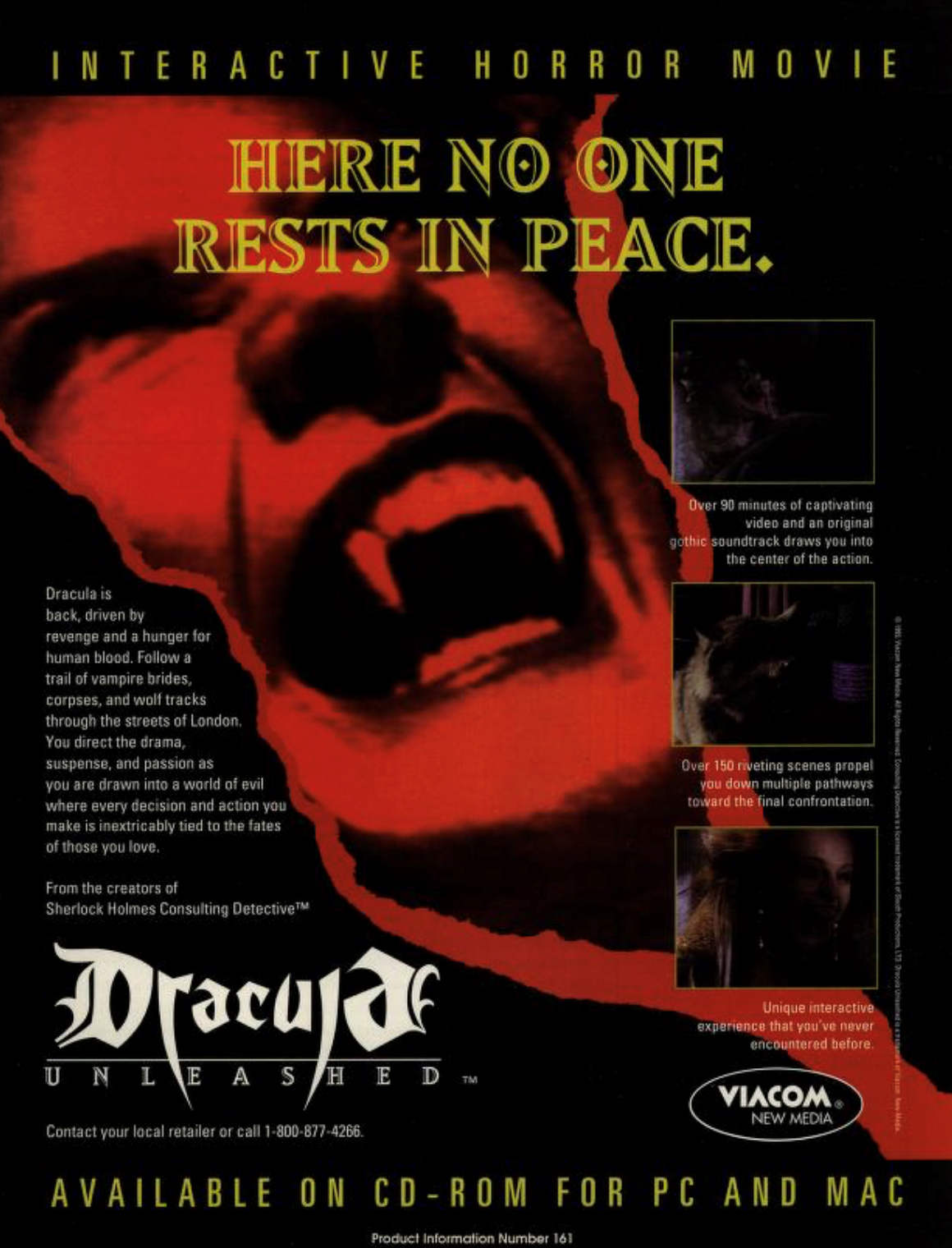
Advertisement for the interactive CD-ROM film “Dracula: Unleashed” (CD-ROM Today, Issue 2, 1993)
Interactive Films
When Black Mirror: Bandersnatch (2018) – a hugely popular interactive film which allowed users to control what happened based on choices they made – was announced to be removed from Netflix in May 2025, fans were in uproar that such a groundbreaking piece of entertainment would be removed (Husain, 2025). However, how new and groundbreaking was it? In reality, the idea of an interactive film was already a craze in the 1990s, with interactive movies on CD-ROM, like Dracula: Unleashed (see image below). Interactive movies were also advertised and popular at the time on CD-ROM and played on PC and on Mac.
A religious experience…
An interesting observation on the themes and patterns of some advertisements in these CD-ROM adverts is related to the religious theme: specifically, Christianity. It is noteworthy that these Christian-themed adverts were found in magazines that were printed and distributed in the USA.
Adverts such as the double paged for Theme Park (1994, see image below) and the one for NEXT (see also below) bring forth an interesting discussion point, that might be worth investigating.
The second advert (“This is a Bible. So is this”) is of interest, as it brings the idea of video games as more than just pastime – but a passion, even a religion – into light.
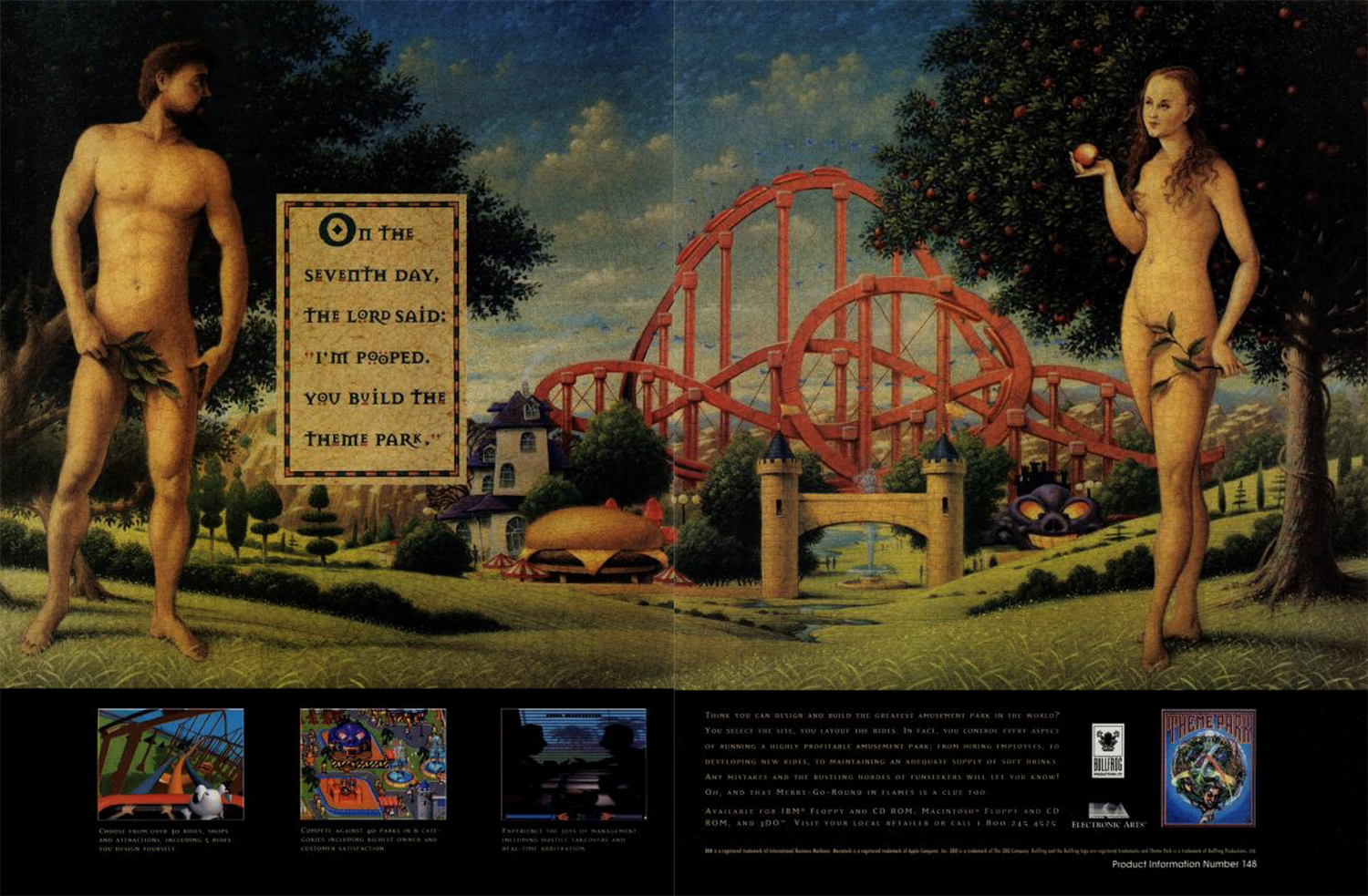
A double-paged advert for the CD-ROM video game “Theme Park” (CD-ROM Today, Issue 6, 1994)

A double-paged advert for the CD-ROM magazine “Next” (CD-ROM Today, Issue 11, 1995)
References
William D. Glenn, Compact Disc – Read Only Memory, in August E. Grant, Ashley J. Bennington, Communication Technology Update (2014), 3rd Edition.
Zainab Husain, Black Mirror: Bandersnatch’ is leaving Netflix forever – Here’s why that matters, Gulf News, 12 May 2025, https://gulfnews.com/entertainment/black-mirror-bandersnatch-is-leaving-netflix-forever-heres-why-that-matters-1.500124600
Travis Sharrow, CD-ROMs: Are They Still Relevant or Obsolete in the Digital Age? (2025) (accessed 21 September via https://softhandtech.com/are-cd-roms-obsolete/)
CD-ROM Today collection, Internet Archive [accessed 29 October 2025 via https://archive.org/details/CDROMToday/CD-ROM%20Today%20Issue%201%20%28Summer%201993%29/mode/2up?view=theater]
Author(s)
Magnus Chan
